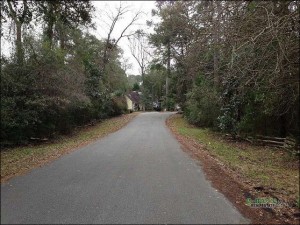by James A. Bacon
It goes without saying that New Jersey is dissimilar from Virginia in many ways, so it’s hazardous extrapolating conclusions from one state to the other. But a new study about New Jersey roads co-authored by Smart Growth America and New Jersey Future implies that the Old Dominion could have saved hundreds of millions of dollars yearly in road maintenance expenses had higher-density development been allowed to occur instead of the scattered, low-density sprawl that characterized so much of the state’s growth after World War II.
Using a novel technique for estimating the surface area of road pavement per capita, researchers found that the most densely developed areas of New Jersey maintain about one-third the pavement surface per capita — about 130 square feet of road surface compared to 423 square feet — as the least densely developed parts of the state.
The conclusion is counter-intuitive. Cities seem to be chock-a-block with streets in a way that rural and suburban areas are not. The key is to look at the space devoted to roads on a per capita basis.
States the study, “The Fiscal Implications of Development Patterns: Roads in New Jersey“:
If for the same population and employment levels, New Jersey had directed development into a smaller land area with at minimum 10 people or jobs per acre (still not very dense — single-family homes on quarter-acres lots would meet the criteria), we estimate that the total area of road New Jersey and its municipalities need to maintain would have been reduced by 36 percent, or approximately 1.9 billion square feet. And assuming an average cost of $0.25 per square foot to maintain the roads, the result would have been a $470 million savings statewide every year.
The analysis draws two broad conclusions: (1) local road maintenance costs per capita decrease as activity density increases, and (2) low-density communities have the most to gain by permitting more density.
Bacon’s bottom line: To get a rough (very rough) idea of what a similar analysis would yield for Virginia, consider that the Old Dominion has about twice as many total lane miles as New Jersey (162,000 compared to 86,000) and that the Virginia Department of Transportation (VDOT) is budgeted to spend $2 billion a year in 2015 (including city and county street payments) on maintenance.
Of course, it’s impossible to go back and tear up the development of low-density areas of Virginia, so the study is academic to some degree. On the other hand, this kind of analysis should guide future investment. Just as Virginians today are paying for poor policy decisions made over the past five decades, future Virginians will pay for our decisions.
I do quibble with the way the authors state their case: It says these savings could have been achieved had New Jersey “directed” development into denser development patterns. I don’t like the idea of government directing how and where people should live. But that doesn’t change the larger point that denser communities cost less per capita on road maintenance than low-density communities. The way to frame the issue in Virginia is this: Had local zoning policies not directed growth into low density areas, average population densities would be higher, less road would have been required, and maintenance costs would be lower.



